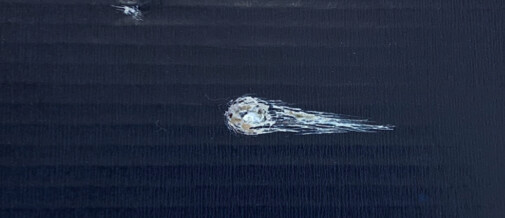
Epiphany (from Greek for “appearance”) used to be one of the Great Feasts of the Liturgical calendar, along with Easter and Pentecost. The weeks following January 6th were called the Sundays “after Epiphany” and the season extended to Ash Wednesday. This is my excuse for still writing about Epiphany, the feast that traditionally celebrated St. Paul’s mission to the Gentiles. Paul’s mission was fiercely opposed by some of the other apostles who wanted to cling to the rites and traditions passed down from the Covenant with Abraham. But Paul preached a New Covenant to people who came to the truth by different routes.
Matthew tells us of the Magi who reported to King Herod that they followed a “star” which led them from East to West and then “stopped” (disappeared?). Questioned by Herod, they said it had appeared about two years before. These were men of “great” intelligence who knew the science of the day, which understood the universe as a great dome which moved around the earth with wonderful, understandable regularity. Then this “star” suddenly appeared and broke through the dome of the heavens and actually guided them toward Jerusalem. This unexplained event made them think a great king had been born.
How you look at something matters. Back in 1997, I stepped outside several times to look towards the North Star (which guides by staying still) and stare at the comet named for Hale and Bopp. It was visible to the naked eye for 18 months. Above is my drawing of what I saw. It was huge. It appeared to be pointing west and along with the sun it moved west. It made me think of the Magi and their “star”, although the math puts our comet’s last visit before Abraham’s time. It did just appear and then after 18 months it disappeared. It made me believe that the star followed by the Magi was really real and made me believe that people of science searching for truth could find Christ.
Some 55 years ago I read a book by Pierre Teilhard de Chardin called, “The Phenomenon of Man”. “Phenomenon” derives from the same Greek word as “Epiphany”. I devoured the whole book all at once and then never went back to it. It settled down, deep in my mind. Teilhard was a Jesuit priest and a noted archeologist who discovered, in China, a skull of a “Missing Link” in the Evolution of Homo Sapiens (us). Not unlike the Magi who followed a star which pointed and moved, Teilhard saw evolution as an arrow pointing forward towards the “sapiens” side of us; or as he put it, our “noos”. He posited as a scientist, not a priest, that the biosphere (our bodies) of our past would and always did evolve into a “noosphere” (our spirit). At the time his fellow scientists berated him and his Church distrusted him. He died long before the birth of the world wide web and electronic communications. Is science not an attempt to understand the work of the Creator? Is the “noosphere” not a continuation of the evolution of thought, meticulously transcribed in the history of the People of God? The Epiphany has always been about the inclusion of all of us into the Revelation of God. The star led to the Child who shared His kinship with us so that we can be called “Children of God”.
Agnes Beirne
JAN
2021

About the Author: